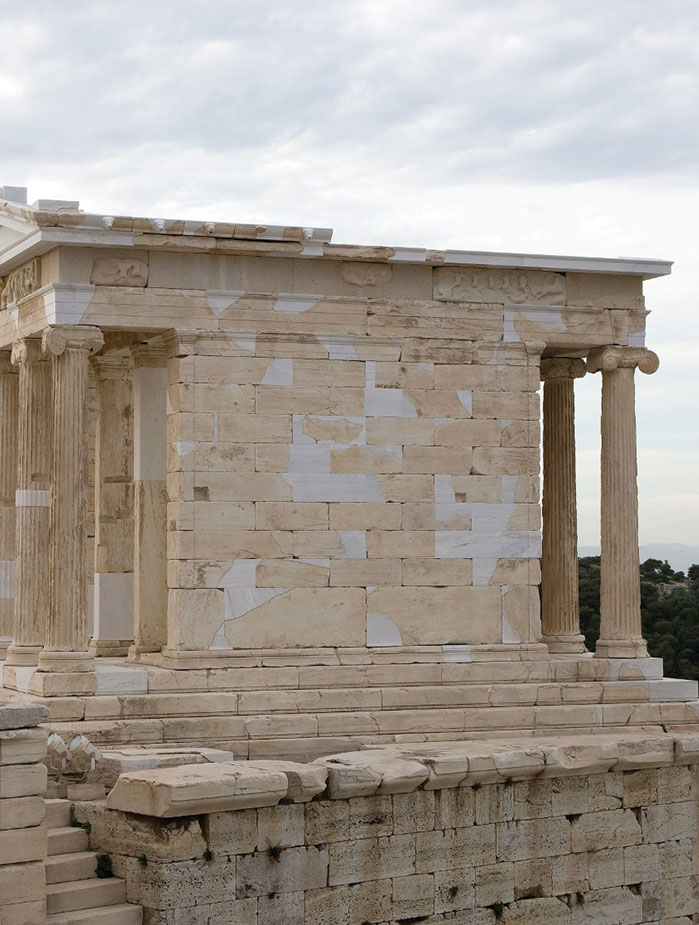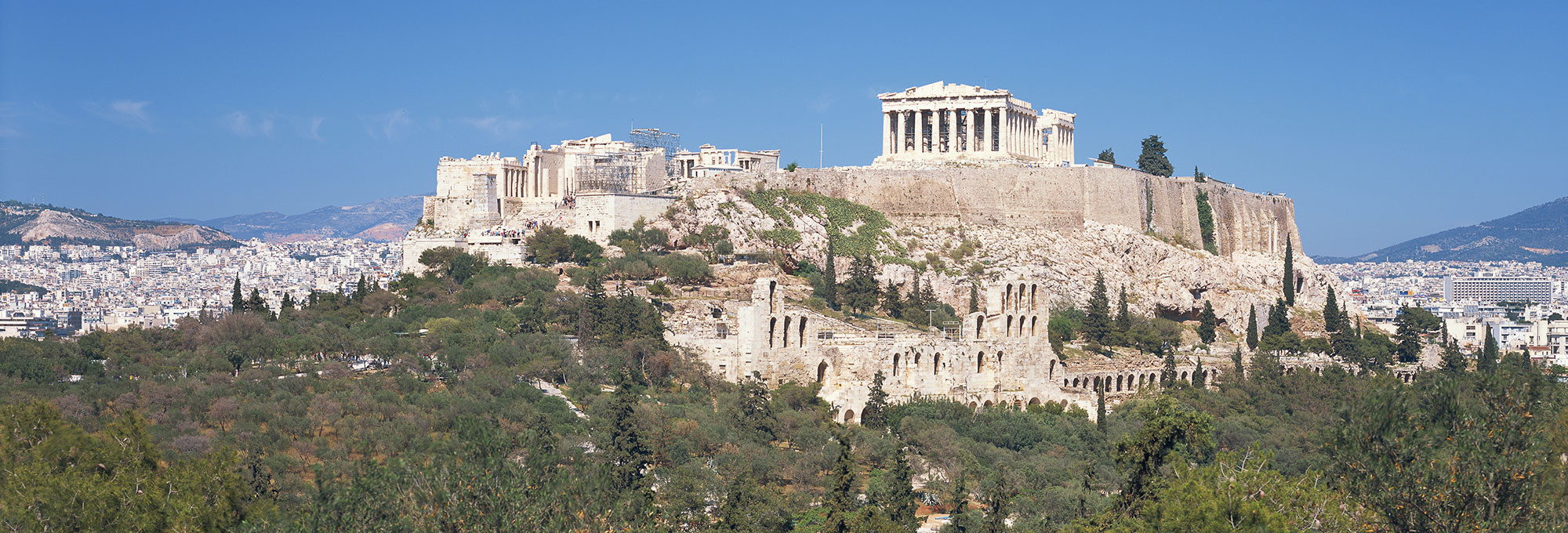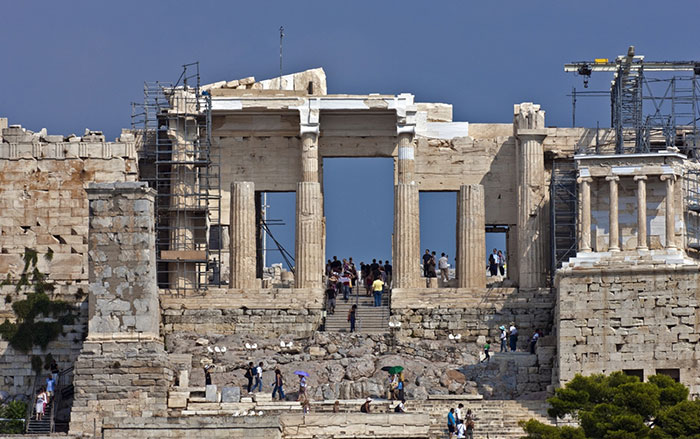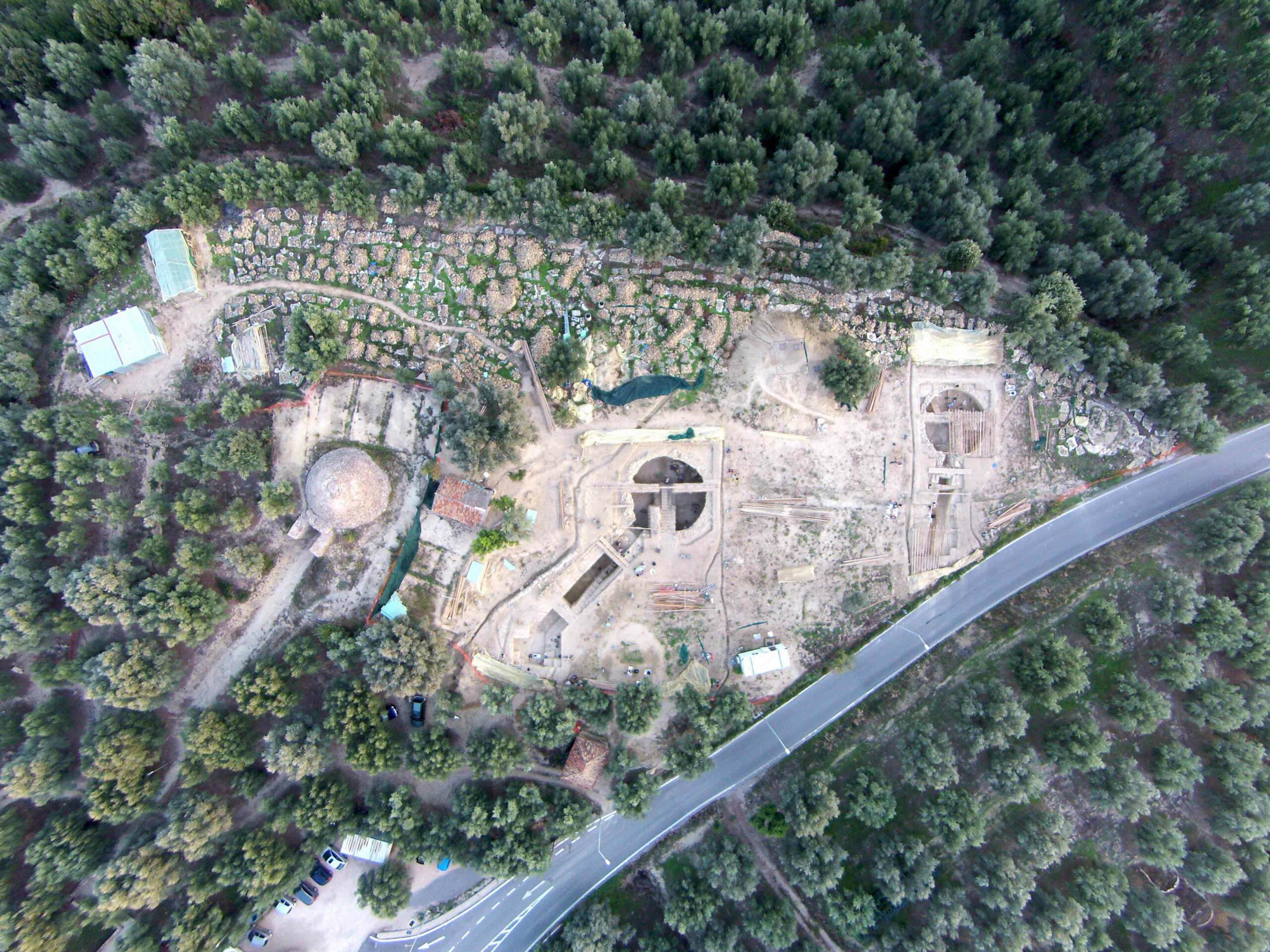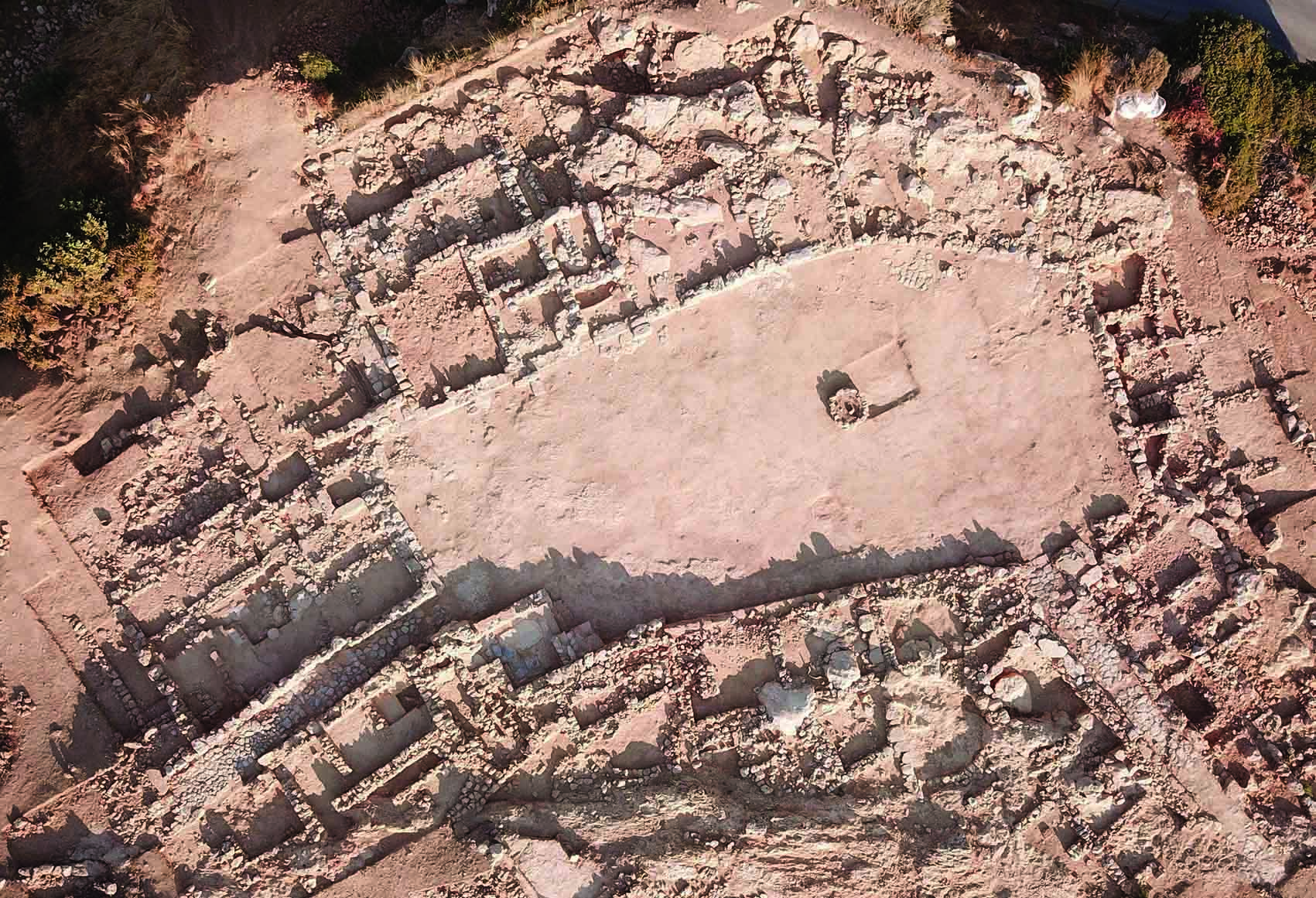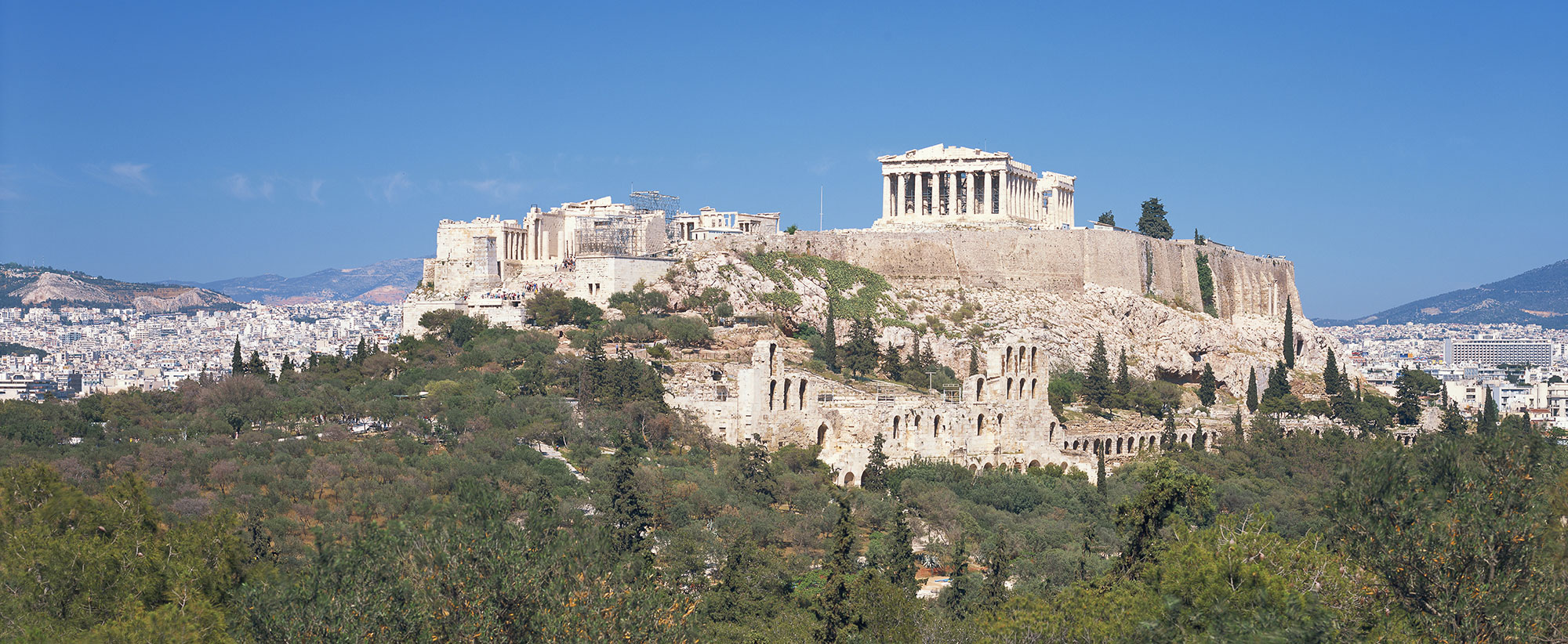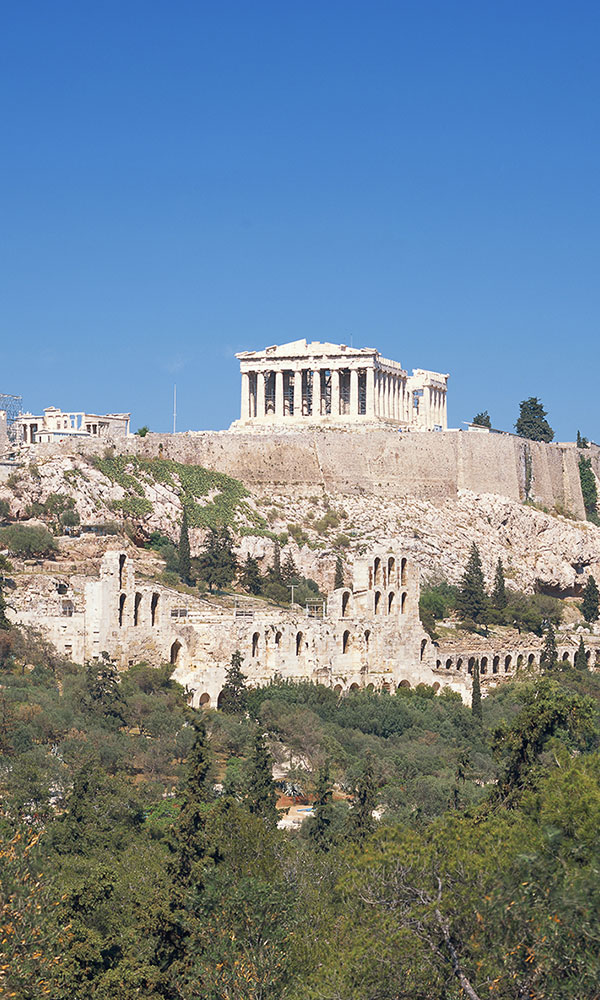
The small marble temple on the rock’s southwest corner dedicated to Athena Nike (Victorious Athena), built between 427 and 424 B.C., was the first building on the Acropolis to be restored. In the seventeenth century, the temple was demolished and its stones used to strengthen the Turkish fortification wall. From 1836 to 1845, it was re-erected in the first of three attempts at anastylosis. Between 1935 and 1940, as part of Nikolaos Balanos’ restoration work, the temple was again dismantled and put back together, and finally, between 2000 and 2010, the most recent restoration was completed. This last required demolition and replacement of the concrete slab installed by Balanos, upon which the temple sat, with a stainless steel grid, as well as the complete dismantling, restoration, and resetting of all its architectural members. During this process, pieces of column drums and capitals, parts of the coffered ceiling, and blocks of the frieze, cornices, and the pediment were all put back where they had originally been. “We had the opportunity to correct mistakes in the positions of stones from the walls and columns. Balanos had put the best-looking ones in the front, even though some of them had originally been on the back,” says architect Vassiliki Eleftheriou. In addition, some fragments that had never been used in previous restorations were identified and set on the building.
The restored temple seen today is not the only monument in this location. As part of the current project, scholars have also conserved an earlier limestone temple to Athena, probably dating to the sixth century B.C., that was discovered in 1936 and that lies beneath the later temple. This earlier structure, along with the base of the cult statue of the goddess also found in 1936, and a tower dating to the Mycenaean period, have been restored and are visible in the basement of the classical structure. Work is currently under way to make this ancient sanctuary accessible to the public.




